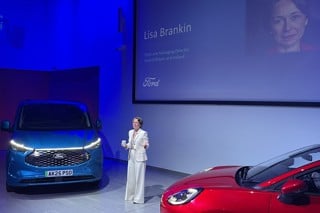In the first of two specially-written AM 'guest opinion' posts to mark International Women's Day, Jacqui Barker head of commercial at drivvn, explains why the drive towards digital and greater diversity in the workforce is set to transform car retail.
Much has been written about the shift to digital retail over the last 12 months. Manufacturers, retailers and their suppliers have pulled out all the stops to accelerate the online customer journey.
On International Women’s Day, it is apt to mark an unforeseen benefit of the move to digital retail. Women have a far higher representation in the marketing and digital operations of manufacturers and dealers, which, as a result, has given women far more influence over the retail experience than ever before.
The impact of this move cannot be overstated. Retail data at Drivvn shows women convert online at twice the rate of men and account for 60% of all purchases. There are many reasons for this, not least a well-documented aversion to the showroom environment.
Women want a transparent retail experience that can be completed in their own time. They may dip in and out of the purchase process before completing the sale.
The impact of a more gender-balanced view of automotive retail will be far-reaching. It should be seen as a positive move that will create a better car buying experience for everyone.
The online purchase process doesn’t discriminate. Most people who buy cars don’t live and breathe the industry and don’t readily know their PHEV from WLTP. In an environment where a car purchase can be personalised, the effect is to democratise the process. Ultimately, this will result in greater car sales.
Customer service is also improving across the automotive industry. The use of AI and machine learning means questions can be answered immediately, around the clock. When buyers want someone to speak to, the resource is there.
There is no doubt that while the pandemic has accelerated digital disruption by several years, what sits at the heart of all the programmes is a desire to give the customer the best experience, whether online or in the dealership. Operations must have the flexibility to shape around the customer, whatever their gender.
There is plenty of evidence of rapid change. The number of people who completed online reservations doubled during the first lockdown against the same period the previous year.
As customer behaviour continues to evolve, it will be necessary for the manufacturers and dealers to anticipate change and adapt the process, and women will have a stronger voice in these changes than ever before.
To meet the challenges, a more flexible and modular approach to digital retailing will be required. Success will depend on having the right tools in place at the right time. The ability to deliver change at pace will require collaborative working, where female leaders are traditionally stronger.
Team working has become a mainstay in business practices, and recent research has focused on what elements make a team most successful. One key factor of a team’s effectiveness is its gender diversity, as the gender mix of a team creates a richer assortment of knowledge and skills.
Data from drivvn points to an omnichannel future where buyers still value the experience of visiting a retailer but may choose to complete more of the journey remotely. Most importantly, they expect the shift between virtual and physical retail environments to be seamless. While technology and data have a key role to play in the process, it will be important for retailers to match the tone of the digital journey.
There are some big challenges and opportunities ahead for the industry. It will be better placed to succeed if the gender balance can be further improved. Both manufacturers and retailers are taking big steps to address this issue, and we are already reaping the benefits.
But gender balance is about more than just percentages. It also requires culture change, and that begins by giving everyone around the table a voice. Change can happen quickly with the correct support and infrastructure in areas like mentoring, training and flexible working.
The pandemic has created a once in a generation opportunity for change across the industry with a better gender balance delivering improved performance for all.



















Login to comment
Comments
No comments have been made yet.